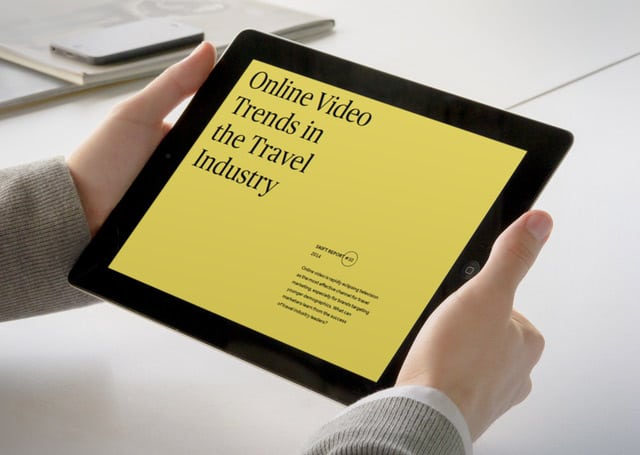Skift Take
Snackable videos are still underexploited by brands, but as platforms such as Twitter and Instagram become more multi-format, travel brands will have an opportunity to experiment and expand.
Recently we released our Skift Trends Report on “Online Video Trends in the Travel Industry” on how travel brands are using online video to market and build loyal audiences. Below is a short extract from it, get the full report to get deeper insights.
Vine and Instagram Video are new platforms for very short clips that travel marketers are just starting to become familiar with.
Just over a year ago, Twitter debuted Vine, an application that allows users to share six- second clips with their smartphones. Despite having no real precedent, Vine took off with consumers, and airlines soon began using the new platform as part of their marketing arsenals. As a new platform, short-form videos “There was really no playbook when this product was released,” says Mike DeJesus, Twitter’s head of travel accounts. “Early adopters set the tone for Vine as a creative outlet, and marketers followed with unprecedented campaigns.”
Vine videos are like visual tweets: succinct, real-time messages that are designed to travel widely. They load very quickly on desktop and mobile devices, require almost no time commitment and sound is turned off by default. Soon after Vine gained traction, Facebook released a similar product called Instagram Video, which allows videos up to 15 seconds.
Short form videos are popular particularly useful for promotional contests and con- sumer interaction. Virgin America was the first airline to use Vine for a campaign. Just days after Vine made its debut, Virgin asked fans for stories about how the airline helped keep the romance strong in a long-distance relationship for a trip to Las Vegas to elope (or not). JetBlue solicited short videos of homemade paper planes for a contest.
DeJesus says that marketers are experimenting with Vine to showcase selling points, tease upcoming products, and make announcements in novel ways. For example, in the lead up to the release of Virgin America’s viral in-flight safety video last fall, the airline ran short teasers and tightly cut trailers on both Vine and Instagram Video to generate buzz. It also put out a few Vines showing the making of the video.
Another trope that has caught on with Vine is stop-motion animation. KLM Royal Dutch Airlines made a stop motion of a toy airplane their first Vine.
Twitter’s DeJesus says that Vine is also well suited to highlighting corporate social responsibility efforts and disseminating short useful how-to videos.
“Loews has done well with six-second DIY home improvement videos, and I would like to see more travel brands doing things like that,” he says. I would love to see a Vine series on how to fit as much into the overhead luggage as possible, pack your liquids or sleep comfortably in an economy seat.”
Related:
Why Online Video Matters for Airline Marketing
Interview: American Airlines’ Tips for Creating Hit YouTube Videos
Skift Q&A: Google Insider Shares YouTube Tips for Travel Brands
Above was a short extract from our “Online Video Trends in the Travel Industry” report, get the full report to get deeper insights.
The Daily Newsletter
Our daily coverage of the global travel industry. Written by editors and analysts from across Skift’s brands.
Have a confidential tip for Skift? Get in touch

